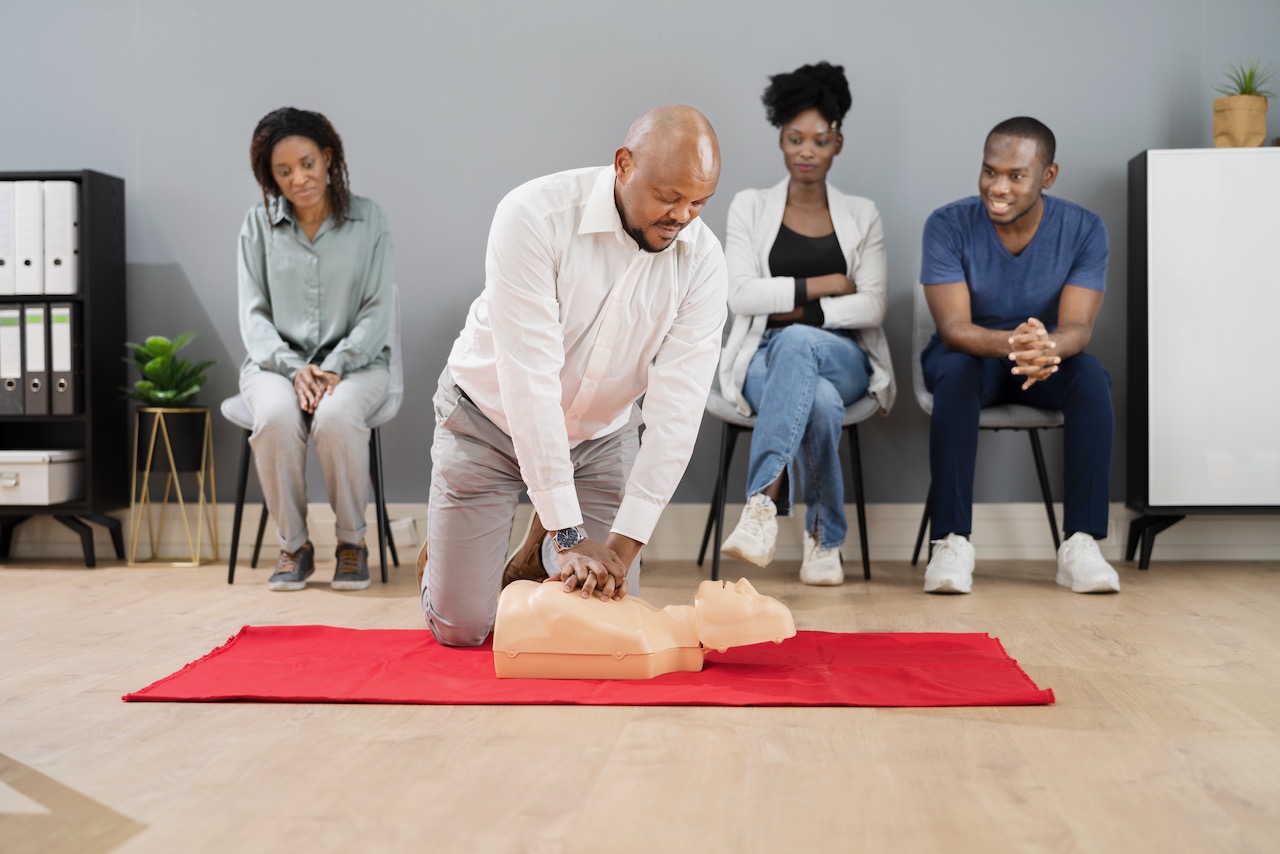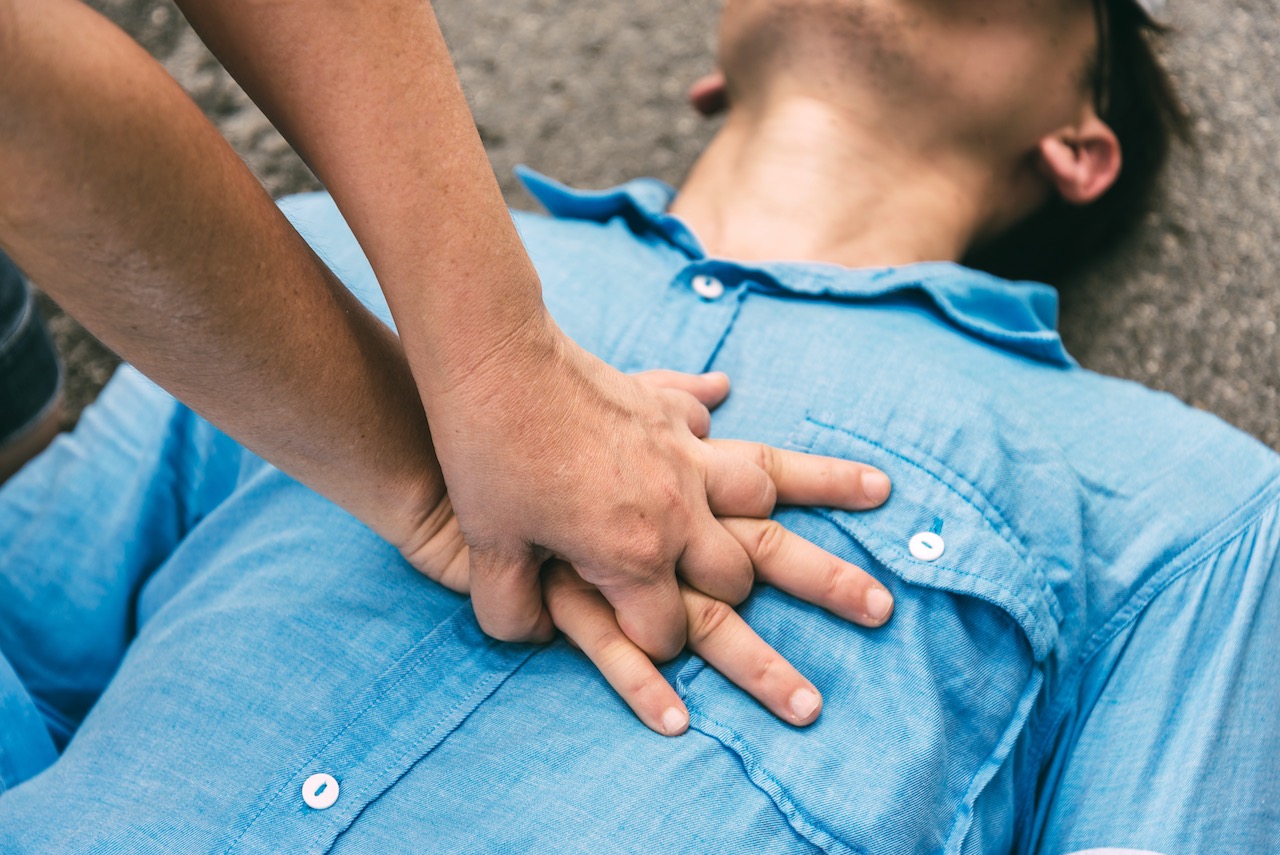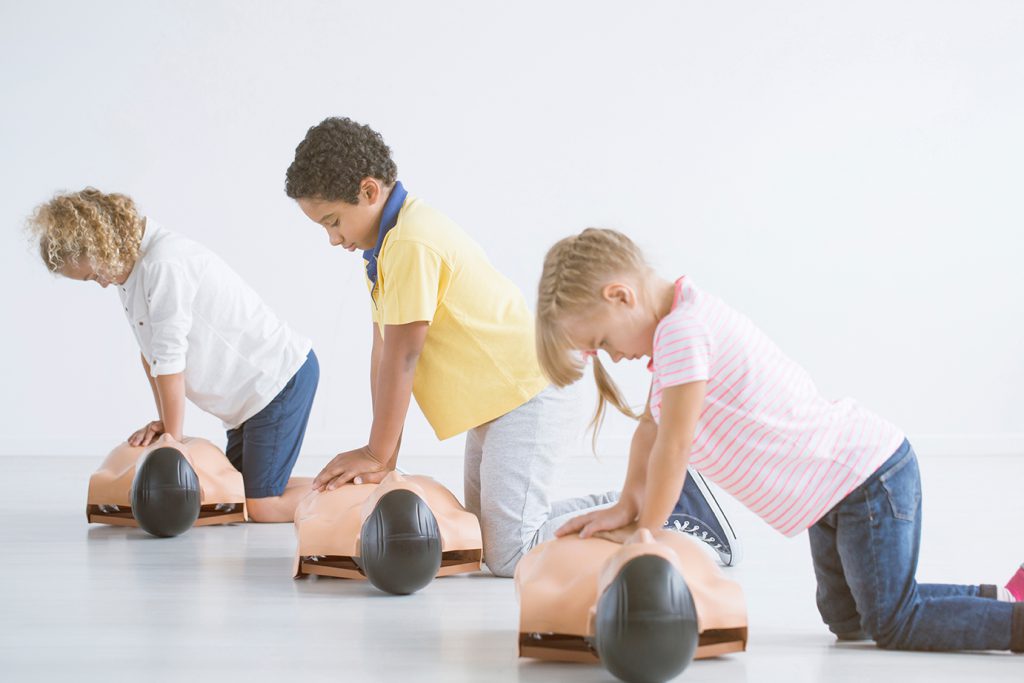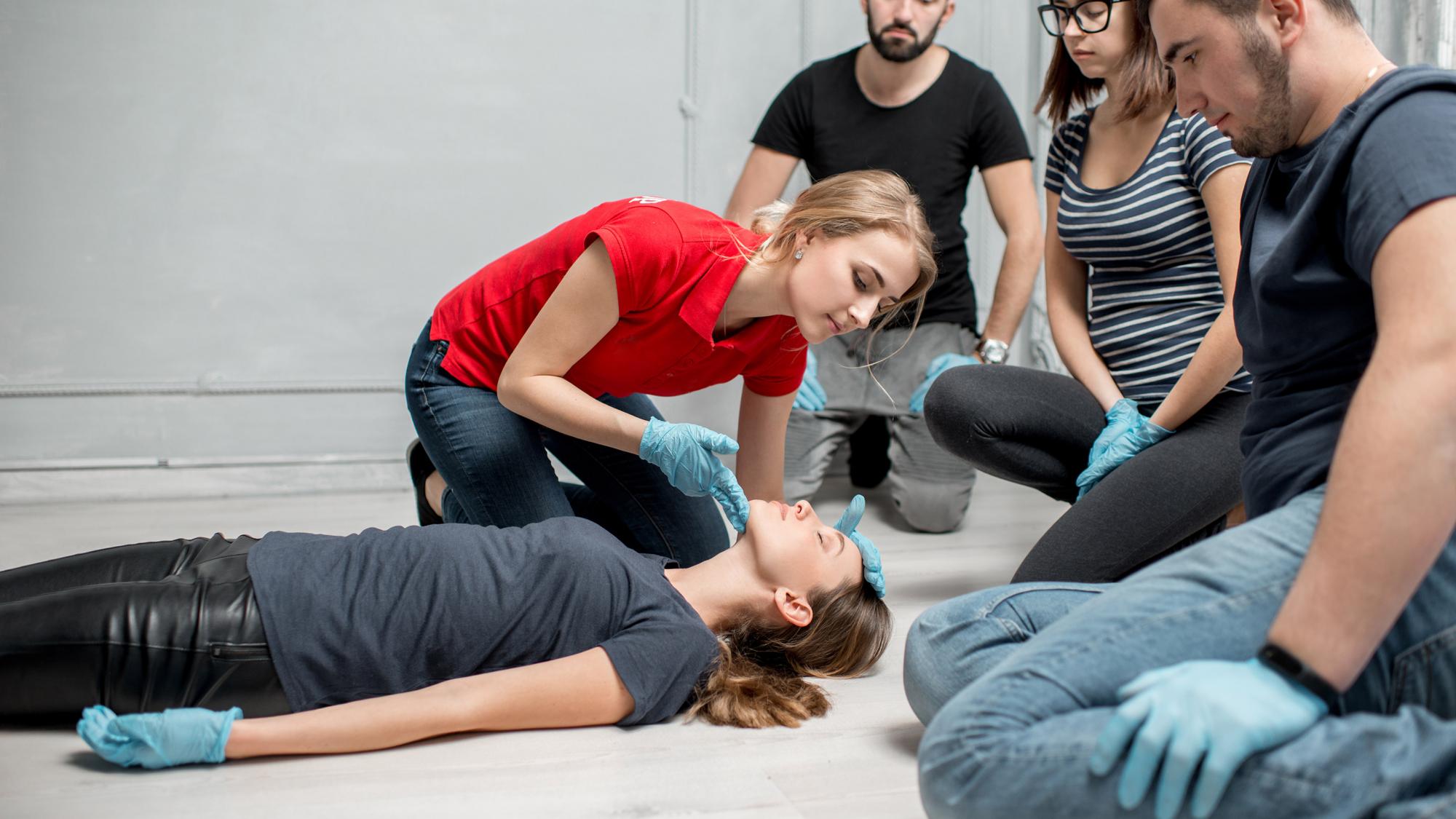You already know CPR is a medical technique which can potentially double a patient’s chances of survival during a cardiac arrest. Now you’re ready to acquire CPR competency for yourself in case you are ever faced with an emergency situation. Naturally, you have some questions, like is it easy to learn CPR? Is CPR hard to perform? And how long does it take to learn CPR?
Have no fear! We are going to answer all these common questions so you feel ready to learn these life-saving skills!

The answer is yes, CPR is easy to learn.
CPR has been specifically designed to be easy for everyone to learn. And, the courses that teach it are all simple and straight-forward.
Yet one of the most commonly held myths surrounding CPR remains: Many people believe CPR is difficult. However, almost anyone can learn how to perform CPR. In fact, both adults and children can master this life-saving technique in a matter of hours .
Still don’t believe how easy it is to learn CPR? Here are the three simple and easy-to-remember steps that make up adult CPR:
Scene Assessment – Ensure the area is safe for you and the patient before you act. Chest Compressions – Perform 30 chest compressions (at a rate of 100-120 compressions per minute). Rescue Breaths – Provide 2 rescue breaths between every 30 chest compressions.It’s also worth noting that non-professional-level courses rarely involve exams or pass/fail questions, meaning there’s no need for the fear of failure to stop anyone from attending a class.
Ultimately, the question to ask isn’t really whether it’s easy to learn CPR, but what difference learning CPR could potentially make to a friend, family member or member of the general public in an emergency situation.

CPR is a technique which can be performed by almost anyone, including both adults and children.
Of the three key steps of CPR (Scene Assessment/Chest Compressions/Rescue Breaths), chest compressions are the most important element as they maintain blood flow to vital organs. This is also the element most people find the most difficult. In typical adult CPR, you should push directly down on the chest using the heel of your hand/hands to approximately 2 inches every compression (at a rate of 100-120 compressions every minute).
It’s important to understand and remember that CPR is not a technique to restart the heart (even though it has been known to occur).
The aim of CPR is to bridge the gap between the onset of the emergency and heart-restarting treatment. This means that outside of performing CPR which physically causes the patient physical harm, incorrectly performed CPR will not do more damage than the cardiac arrest would anyway. Death would be the most likely scenario in the absence of CPR or medical treatment anyway.
Remember: Any proficiency of CPR provided to a person requiring CPR is better than no CPR at all.

If you’re looking to learn CPR as quickly as possible and only cover the basic technique of CPR with no additional first aid skills, it can take as little as 2 and a half hours to complete an in-person CPR certification.
The Emergency First Response CPR & AED Course is a great option to cover both CPR and AED use.
There are online videos and books which outline the basics of CPR, meaning it’s possible to teach yourself the theory of how to do it, why it works and when you should use it.
However…watching videos or reading books should not replace in-person, hands-on training.
During a CPR or First Aid course, you will practice and refine the correct CPR technique guided by a qualified professional. A lot of CPR courses also use advanced, life-like dummies to give students a more realistic idea of what is required if their CPR skills are called upon in an emergency situation.
It never hurts to be more informed. But, any online learning should be accompanied by in-person, physical practice. Remember that good CPR technique makes a difference to the chance of success or failure.

The best way to learn CPR is by signing up for a CPR course or a first aid course which covers CPR. There are organizations across the globe that can teach in-person CPR — including Emergency First Response® (EFR®).
EFR Courses that cover CPR include:
If you’re ready to become a key link in the chain of survival and acquire the knowledge and skills required to act in an emergency situation, it’s time to sign up for a CPR course. You can discover more about each of the available EFR courses here or search for your nearest available courses using the link below.
Share This
